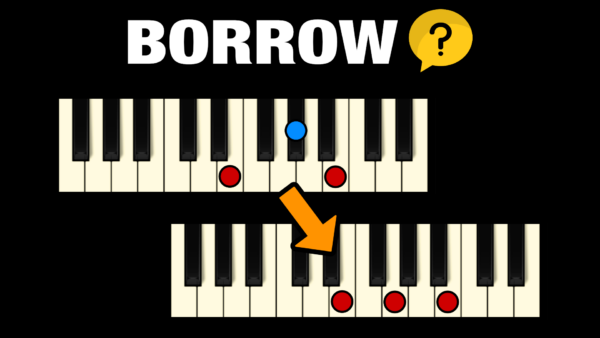 Do you want to learn what borrowed chords are, and how you can use them in your music?
Do you want to learn what borrowed chords are, and how you can use them in your music?
As you know, any music composition is based on a fundamental scale.
The two most common scales being the major scale and the minor scale.
There are in fact 1000s of scales in music. And you should also know that the major scale and the minor scale are actually 2 of the 7 main modes in music.
The major scale is called the Ionian Mode, and the minor scale (natural minor scale to be specific) is called the Aeolian Mode.
Borrowed Chords – Modes Chart
Here are the chord chart for all 7 diatonic chords for each mode. You can use this chart when you want to borrow a chord from another mode on the specific chord degree in your chord progression:
[table id=3 /]
If you want to use 7th chords, this is a chord chart per mode for all 7th chords:
[table id=5 /]
What is a Mode in Music?
A mode is basically like a scale, but the difference is that the modes all share the same notes, but starts on a different root note, which results in a different pattern of whole-steps and half-steps.
And due to this reason, each mode will have a different order of the diatonic chords. And when you use a “borrowed chord”, you are temporarily using a chord from a different mode.
How to use Borrowed Chords in Music?
When writing your chord progression, you always use your main key and scale (or mode) as your starting point.
For example, if you write a song in a major key, you can throw in a “borrowed chord” from one of the other modes on the same degree. If you want to play a V chord in major, that is a major chord. But you may choose to borrow the minor chord from the same V degree from the Aeolian Mode (natural minor).
Another example: let’s say you write your music based on the Dorian Mode. Then the 3rd chord degree is a Major chords. But you can choose to borrow a minor chord from the Ionian Mode, or perhaps even the diminished chord on the same 3rd degree from the Mixolydian Mode if you want to add some tension.
And you can of course also use 7th chords, or any other chord for that matter. The main point is that you borrow a chord from another mode, on a specific point in your chord progression, but then go directly back to the main diatonic chords for the scale/mode you use for your composition.

